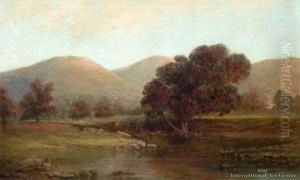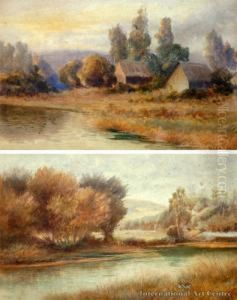Emma Marie Walrond Paintings
Emma Marie Walrond was a British artist born in 1856, whose work, though not widely known today, contributed to the rich tapestry of 19th and early 20th-century British art. Walrond’s artistic journey and contributions are reflective of the era's challenges and opportunities for women artists. She specialized in watercolors, a medium that was increasingly appreciated for its versatility and delicacy during her lifetime. Her subjects often included landscapes, still lifes, and portraits, showcasing her ability to capture the subtleties of light and color that characterized the watercolor technique.
Emma's life spanned a period of significant social and artistic transitions, which influenced the themes and methods of her work. The late 19th century saw the burgeoning of various art movements, and while Walrond was primarily rooted in the traditional techniques of her time, her work occasionally hinted at the evolving styles that were to dominate the early 20th century. Despite the challenges faced by women in the arts during this period, including restricted access to formal education and professional opportunities, Walrond managed to carve out a space for herself in the art world. This was a testament to her skill, determination, and the support networks available to women artists at the time, including art societies and exhibitions that began to open more widely to female participants.
Emma Marie Walrond's death in 1930 marked the end of a career that, while perhaps not as celebrated as some of her contemporaries, remains a fascinating example of the contributions women made to art during a period of significant change. Her legacy, like that of many women artists of her time, offers valuable insights into the social and cultural dynamics of the art world in the late 19th and early 20th centuries. Through her work, Walrond not only contributed to the aesthetic development of her era but also to the gradual transformation of the role of women in the arts, challenging the limitations imposed on them and paving the way for future generations of female artists.


